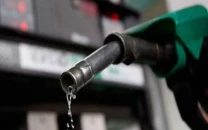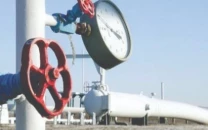Future of hydroelectric power
Emergence of cheaper sources like solar and wind has diluted hydro’s attractiveness

COP27 has ended in Sharm El-Sheikh, Egypt. It has reaffirmed its commitment to a maximum of 1.5-degree Celsius rise in temperature over pre-industrial global average. Some support to natural gas as a transition fuel has survived.
The most important and new feature of COP27 is the loss and damage fund. Not much is known as to what would be the source of fund and how would it be allocated to the loss and damage victims. Will it be governments or individuals?
Initial indications are also not very encouraging. EU has offered 60 million euros to Pakistan as against the estimated damage and loss of $30 billion.
COP27 seems to have ignored hydroelectric power as a reliable renewable energy source worth promotion. However, they have spoken volumes about solar, wind, hydrogen and electric vehicles. Reason for ignoring hydro appears to be a lack of mountains in many parts of the world providing water head.
Hydropower has been one of the most pursued sources of energy and the only available renewable energy source before the era of wind and solar power began recently.
Solar is the new hero of today and tomorrow. Solar PV would generate 38-50% of the world’s electric power (10,000-14,000 gigawatts). Hydropower belonged to yesterday. It may never go beyond 1,500GW.
Hydropower has many advantageous features – it can start instantaneously providing black start functions in case of grid failure and restart, provides energy storage by pumped storage and provides base load power in its availability period.
It requires no fuel except water, which is its defect too; drought causes loss of production and decreased reliability. Continuous and successive droughts can be extremely dangerous for energy supply and the economy.
Existing installed hydropower capacity is 1,360GW (17% of the total global capacity), out of which China has 391GW, Brazil 109.4GW, Canada 82.3GW and USA 101.9GW.
However, new additions to hydro capacity in most countries remained below 1GW, while China added more than 20GW. In Norway, Brazil and Canada, hydropower accounts for 93.4%, 63.5% and 58.8% of electricity generation respectively. In Pakistan, installed hydropower generation capacity is around 10,000 megawatts, accounting for 15% of total hydro potential of 60,000MW. It has been a much sought-after source of electricity in our region including India, Pakistan and Nepal due to Himalayas.
IGCEP (power plan) provides for adding 12,000MW of hydro capacity by 2030. In Pakistan, Kalabagh Dam and Bhasha Dam attracted quite some political debate; Kalabagh appears to be buried in the debris of history and inter-provincial political opposition; Bhasha has been inaugurated several times and recently, its implementation dates have been advanced into future.
K-P earns significant royalty from hydro and would like to get even more than the present allocation. In the province, the recent oil and gas discoveries may dilute dependence on hydropower royalties.
Will hydropower remain as attractive and sought after in future? Probably not! The emergence of cheaper and widely available sources like solar and wind has diluted the attractiveness of hydropower. Hydropower’s capital intensity in an atmosphere of high interest rates has also become a negative factor. Current capital cost is $2.5 million per MW and generation cost is 8-10 US cents per kilowatt-hour (kWh), as opposed to $0.60 million per MW and 2-4 US cents per kWh of solar PV plants.
To deal with the intermittency problem of solar and wind and to provide for grid stability, a new role of hydropower is emerging. Hydro pump storage has been there for a long time now but its share has not been as high as can be expected in future laden by solar and wind power. A classic example of this new role is the installation of hydro pump storage in the UAE. There is no hydro pump storage installed yet in Pakistan.
With the planning and implementation of a large component of 10,000MW solar energy, IGCEP may have to add a significant amount of hydro pump storage. K-P govt may well be advised to lobby for such a capacity.
Pakistan has consistently ranked over the last 10 years among the 10 highest risk vulnerable countries due to climate change. After having been hit by scorching heat in April, the country had to face massive floods; 33 million people have been impacted, 325,000 homes destroyed, 735,000 livestock lost and 2 million acres of crop damaged.
Water dams have been swept away in Balochistan. Floods have destroyed 105 mini-hydropower plants in Malakand and Hazara.
There were controversies about hydropower even in its heydays, the salient of which are land use, displacement of communities, biodiversity loss, dam failure risks, etc.
GHG emissions from hydro are a new amazing discovery challenging its attractiveness. Of these, entire climate change poses the maximum risk, which will be our subject of discussion in this space.
New controversies have come to light. Latest data and studies indicate flood risks due to dams themselves. Dams release GHG as well by anaerobic processes of the vegetation under water.
Dams’ safety risk may increase with increased climate risks. The need for continuous monitoring of dams, adaptation and improvements has never been more than has come to surface now.
Around 61% of world dams are under risk of drought or floods or both by 2050. In 2021, California’s hydropower production went down 48% from the 10-year average.
France suffered a loss of 30% in hydro generation. In Spain, the fall in hydropower production due to droughts has been 44%. In Europe, overall production loss has been 20%. National hydropower production in the US is expected to drop 14% from 2021 to 2022. South Africa has suffered from frequent droughts reducing water reservoirs capacity to 11%. India and Pakistan suffered major drought at least once every three years in the past four decades. In 2001 drought, hydro production dropped by 35% due to lack of water. More frequent droughts and successive ones that are expected in the wake of climate change effects, are destabilising hydropower plants’ operations. We are observing Neelum-Jhelum issue related with water flow.
In Ukraine, a recent World Bank project has bundled solar PV and BESS (battery storage) to deal with the issue. Also, it is obvious that hydropower cost would go up by the corresponding percentages diluting its comparative economics.
Should we have more hydropower? Should we review our plans? What changes are required in hydropower sector planning?
Certainly, storing water is a necessity. However, there may be other alternatives, eg charging aquifers rather than building rock or concrete dams or doing both? More rethinking, research and debate are probably required on the issue.
Hydropower has replacements and competitors. It may reduce the classical commitment to hydropower. However, hydropower has its own strength and features which are not available with solar or wind power.
The writer is former member energy of the Planning Commission and author of several books on the energy sector
Published in The Express Tribune, November 28th, 2022.
Like Business on Facebook, follow @TribuneBiz on Twitter to stay informed and join in the conversation.



















COMMENTS
Comments are moderated and generally will be posted if they are on-topic and not abusive.
For more information, please see our Comments FAQ